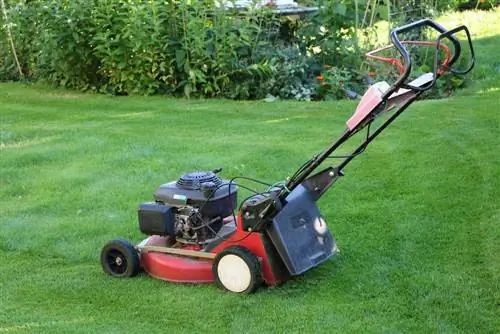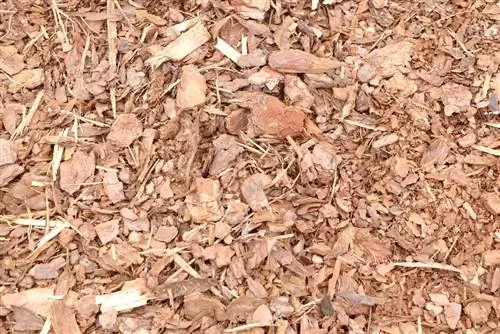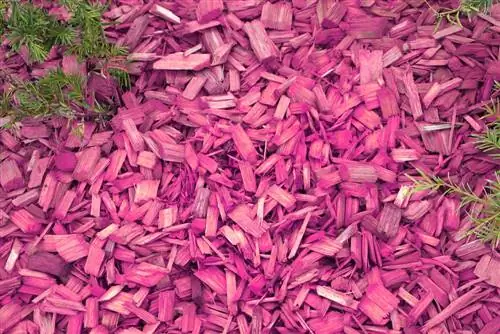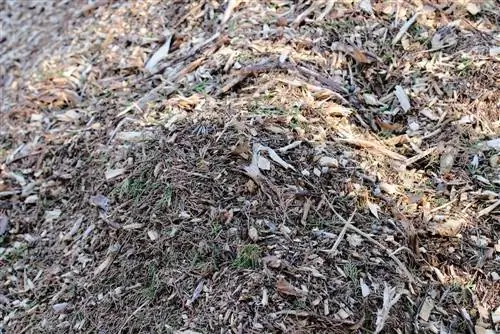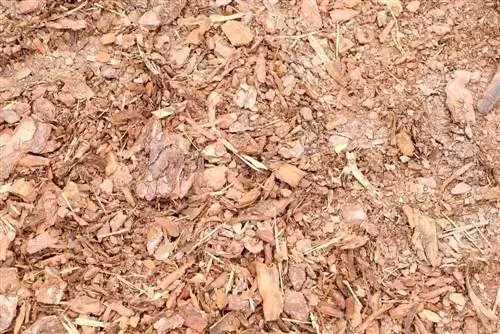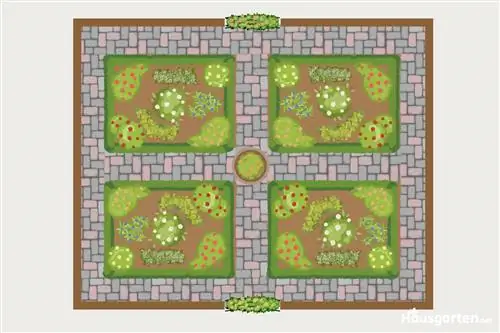- Author admin [email protected].
- Public 2023-12-17 03:39.
- Last modified 2025-01-24 12:45.
The lawn clippings that occur regularly after mowing are a true treasure. It contains important nutrients that promote the growth of all kinds of plants. It can also be used to control weeds. And finally, it can also be perfectly composted to produce rich soil. In short: lawn clippings are far too valuable to simply dispose of in the organic waste bin.
Lawn cutting
During the growth phase, a lawn needs to be mowed regularly. This brings it into shape and ensures an evenly closed surface. It's a bit like cutting hair: mowing also stimulates growth and thus promotes a beautiful lawn. Even though it can sometimes be annoying and very time-consuming, without mowing the lawn would wither and become unsightly over time. The problem is not so much the mowing itself, but rather the clippings that are produced. Many garden owners are unsure about what to do with it. Just leave it there? Throw it away or dispose of it? Or use it as fertilizer? Basically, grass cutting is suitable for the following measures:
- as your own fertilizer for the lawn
- as natural fertilizer for other plants
- as a top layer to control weeds
- as compost
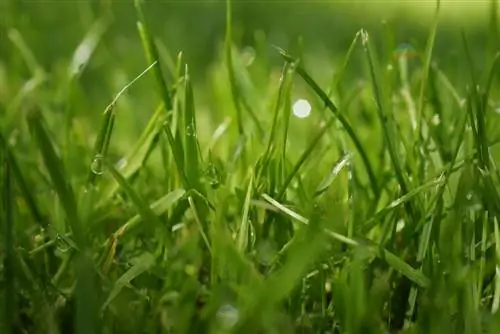
This makes it clear that grass clippings are far too good not to be used in the garden. It can be easily integrated into the natural cycle of life. This often saves costs, not least because fewer additional fertilizers have to be purchased. Above all, it is an important contribution to environmental protection and the preservation of our natural resources.
Home fertilizer
Cuttings such as grass clippings are organic material that will decay naturally. When rotting, nutrients are released that plants need to grow and thrive. Cuttings are therefore a natural fertilizer. That's why it can easily remain on the lawn after mowing. The rotting process will begin immediately. The fertilizing effect follows after a few weeks.
Tip:
With a conventional lawn mower, the clippings usually end up automatically in a collecting basket. If you want to leave it on the lawn, you should remove this basket when mowing.
In order to use the lawn clippings as your own fertilizer, the mown stalks should not be too long. Basically the following applies: The shorter the mowed stalks are, the faster the rotting process begins. Long stalks, on the other hand, are extremely dried by the sun in summer and initially turn into hay. After mowing several times, they can also cause the lawn to become completely covered. The blades of grass then receive less air and, above all, less sunlight, which in turn restricts growth.
Lawn mulch
With a so-called mulching mower, the clippings are extremely chopped up during mowing and thrown out again straight away. If you want to use grass clippings as your own fertilizer for your lawn, you should think about purchasing such a mulching mower.
Even with a layer of grass clippings, the lawn obviously needs to be watered in summer. This watering is actually necessary to encourage the rotting of the cuttings. So you don't have to worry about this. What is much more important, however, is that in all probability not the cut of each individual mowing process should be left behind. At some point the layer could simply become too dense. That's why the mulch should be used for other purposes from time to time.
Plant fertilizer
The fertilizing effect of lawn clippings naturally extends not only to the lawn itself, but also applies to all other plants in the garden. It can therefore also be used perfectly as a fertilizer in beds or as an important nutrient supplier for hedges, trees or bushes. However, you should always keep in mind that it takes some time for the cut to actually rot. It is therefore not suitable for ensuring the fastest possible supply of nutrients. The clippings can be applied to the following places:
- directly in the root area of the plants
- in areas adjacent to the root area
- in beds between the plants and in the aisles
- for hedges directly in the root area under the hedge
- for bushes, covering the entire circumference of the bush
- On roses only to a limited extent in the root area
The lawn clippings should always be applied over the entire area. The aim should be to ensure that no more sunlight can penetrate through it. As a rule, a thickness of 1 cm is completely sufficient. Of course, when watering the plants, the applied mulch is also watered. Under certain circumstances it may be that this mulching alone is not enough. Additional fertilizer applications are often necessary, especially for plants with a very high nutrient requirement.
Note:
When fertilizing plants, it is fundamentally important to pay attention to how and whether the fertilizer works. If, for example, leaf changes occur despite fertilization with lawn clippings or if growth is slowed down, additional fertilizer is required.
Top layer
Lawn clippings are perfect as a covering layer around the plants. Such a top layer has two functions. On the one hand, it ensures that no light can penetrate through it. This inevitably means that no weeds will grow under it, as they also absolutely need light. Any mulch fertilization will therefore also contribute to weed control. However, seeds can also be added under certain circumstances. On the other hand, this top layer also provides a certain degree of protection from the cold. As is well known, there can still be ground frost in our latitudes even in May. The layer of mulch from the first lawn cuttings can be valuable protection. And the last lawn cuts of the year also protect the plants from the first temperature drops in autumn.
Compost
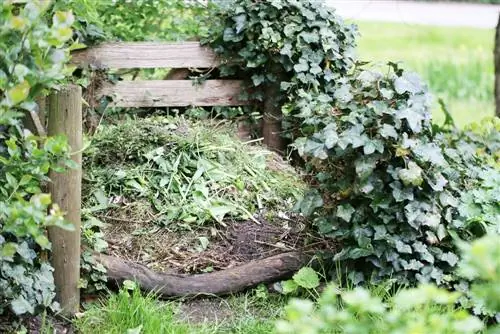
As an organic material, grass clippings can of course also be composted. You simply throw it on the compost and wait for it to rot. However, there may not be enough space for this. Especially those who have a larger lawn and have to mow frequently quickly find themselves faced with certain limits. That's why it makes sense to have multiple routes. The clippings should not only be composted, but also used for other purposes. When composting, it is also of great importance to combine it with other organic materials such as kitchen waste.

